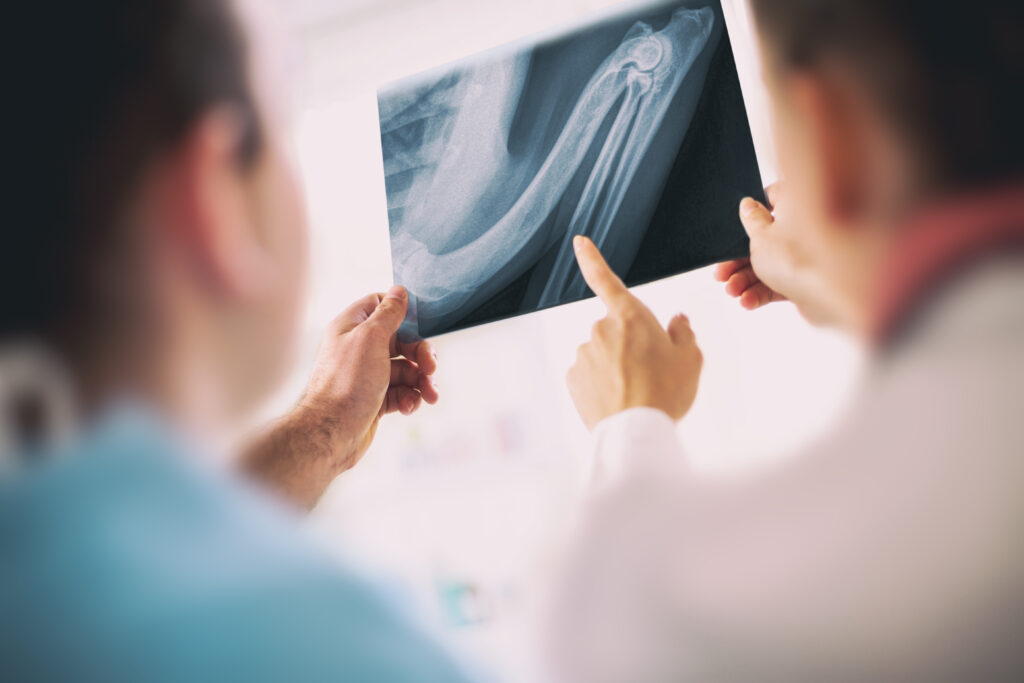
In a rapidly advancing technological landscape, Artificial Intelligence (AI) is no longer just reserved for large-scale enterprises, it now has the potential to be seamlessly integrated into the day-to-day operations of even the smallest of veterinary clinics. This paradigm shift signifies a new era in veterinary medicine, where AI is not just a tool for innovation but a fundamental force driving the evolution of how veterinary services are delivered and managed.
In this article, we will delve into the seven key areas where AI is already making an impact in veterinary practice. Exploring how it can make diagnosis more efficient and accurate and the almost endless possibilities provided by data and predictive analysis. We’ll also look at its ability to help enhance the client experience and simplify your record keeping, plus optimise your practice marketing. All of these can help streamline your operations and enhance the services you offer to your animal patients and owners.
#1 Faster radiology results
AI-powered imaging analysis programs can assist in analysing radiographs, ultrasounds, and MRIs with remarkable precision and serve as a valuable tool to complement the skills of veterinary radiologists. These tools streamline the analysis process and allow radiologists to focus on the images that most need attention and the expertise of a trained clinician.
An example of this is Vetology AI, which uses an AI database built from thousands of animal cases. Digital images can be quickly analysed, and evaluations sent in under five minutes. The results? Fewer treatment delays, increased confidence, improved patient care and client satisfaction.
#2 Digital pathology
The use of in-clinic or laboratory-based scanners to create high-res digitised images for pathology samples offers a number of benefits. The key one in this context is that advanced AI algorithms, which have been trained on vast amounts of data, can be used to analyse the digital image, searching for abnormalities and markers and provide a much quicker and more accurate diagnosis, which is, of course, crucial for effective treatment plans.
Moreover, AI-powered, deep learning-focused algorithms are also able to look for cell variations and patterns that are not apparent to the human eye. According to Kerry Freel, Anatomical Pathologist at NationWide Laboratories, Scientists are already using this technology for grading prostate biopsies and identifying biomarkers in breast cancer in human medicine.
Read Kerry’s article ‘Digital pathology: taking veterinary diagnostics to the next level’ to find out more.
#3 Health monitoring
AI-powered animal health monitors, such as PetPace, Whistle, and FiBark, use advanced AI algorithms and innovative sensors to monitor a range of vital signs and biometric data, including activity levels, heart rate, respiration and temperature.
This health data can be useful for the early detection and diagnosis of various medical conditions and therefore improve the effectiveness of treatments and enhance patient outcomes. Furthermore, this real-time remote monitoring can be used for critical patients or those with chronic conditions.
#4 Data & predictive analysis
Veterinary practices generate vast amounts of data on a daily basis, including patient records, lab results, and treatment history. AI can help harness this data and turn it into actionable insights. By applying machine learning techniques, AI algorithms can analyse complex datasets and identify patterns or trends that may not be immediately apparent. This data-driven approach can help in predicting disease progression, identifying risk factors, and even suggesting optimal treatment plans.
The researchers in this study – ‘Predicting early risk of chronic kidney disease in cats using routine clinical laboratory tests and machine learning’, used AI trained on Electronic Health Records (EHR) from more than 100,000 cats across breeds, geographical areas, and ages to look for specific factors that contributed to CKD. They were then able to use the four factors identified to predict whether a cat would develop CKD within two years with greater than 95% accuracy.
#5 Streamlined record-keeping
Practice management software (PMS), such as that provided by VetIT, has become an essential tool to streamline operations by automating administrative tasks like scheduling appointments, managing inventory, and handling billing processes. The incorporation of AI into this type of software is only going to enhance its capabilities, offering even more automation and time-saving features.
But there is one AI solution that is already on the market, which it’s definitely worth investigating – AI-driven voice recognition. This offers an enhancement to previous dictation software that has often struggled to accurately interpret speech patterns, can be slow and likely to make errors. Advanced AI algorithms can accurately transcribe audio recordings or live speech in real-time and as it has the capability to learn and even predict medical vernacular, it will only get more efficient and accurate over time. There is also the potential that AI algorithms will be able to make automatic connections between dictated notes and breed-related health conditions, helping you to identify risk factors, and even suggesting optimal treatment plans.
SpeechText.AI is one example of this speech recognition and transcription software, which can effortlessly capture patient information during consultations and procedures, either in the clinic or on the go using smartphones or portable devices.
#6 Enhanced client experience
AI-powered chatbots and virtual assistants can enhance the client experience by providing immediate support and information. These virtual tools can answer frequently asked questions, provide general pet care advice, and offer guidance on common ailments when clients may not be able to reach a veterinarian immediately.
Key features of AI-powered client support tools include:
-
Natural Language Processing (NLP) capabilities that allow chatbots to understand and respond in real-time.
-
Access to a comprehensive database of information that can be continuously updated with the latest veterinary knowledge.
-
Integration with appointment scheduling systems to assist clients in finding available time slots or booking appointments.
A great example of this is PetsApp’s CoPilot, an AI communication assistant that is designed to enhance communication between veterinary teams and pet owners. CoPilot, which uses the latest technology from OpenAI, the company behind ChatGPT, uses AI to suggest replies for all inbound pet owner messages. Making it easier for veterinary teams to provide prompt and personalised responses to pet owners’ inquiries.
#7 Optimised practice marketing
AI can redefine marketing strategies for veterinary practices, allowing for personalised and targeted communication with clients. By analysing client data and preferences, AI algorithms can create tailored marketing campaigns and recommendations. AI-powered applications can also assist in social media management and content creation.
AI chatbots such as ChatGPT, Copy.ai and Writesonic, are advanced language models powered by artificial intelligence. They employ machine-learning techniques to understand and generate human-like text based on the input, or prompts, they receive. They can help to create compelling marketing content for your website, blog posts, email marketing and social media, that speaks to your customers in a relatable and authentic manner.
Read more – ‘Unleashing the power of AI chatbots: A revolution in practice marketing’
The article was originally posted in The Cube magazine, February 2024 issue. Click here to read the magazine.





